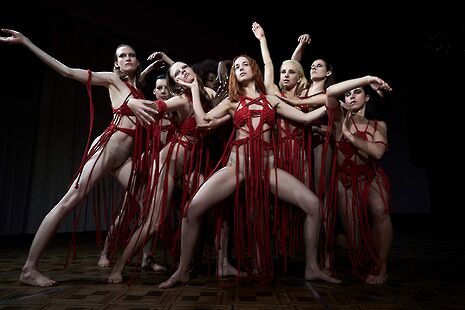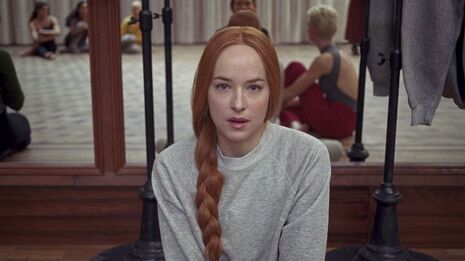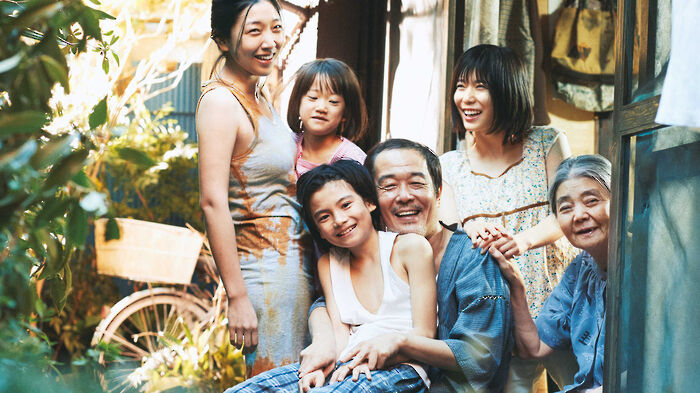Suspiria: a remake worth watching
Miikka Jaarte takes a look at the reimagining of the 1977 horror film

If there’s one thing Luca Guadagnino’s Suspiria is, it’s unpredictable.
That’s saying something for what is, at least officially, a remake of a horror film from 1977. The original Suspiria, directed by Dario Argento, is a film about a young dancer who joins an elite dance school - only to find out that it is run by a coven of witches. That’s pretty much where the similarities with Argento’s original and Guadagnino’s re-imagining end. But while fan’s of the original might be disappointed in certain great departures from the original, Guadagnino’s version of Suspiria manages to stand triumphantly on its own. With a runtime of 150 minutes, Suspiria is a grand and gruesome film about passion and power. It’s also one of the best horror movies of the year.
"With a runtime of 150 minutes, Suspiria is a grand and gruesome film about passion and power. It’s also one of the best horror movies of the year."
Perhaps the greatest departure from the original Suspiria, which was set in the sleepy town of Freiburg, is that Guadagnino sets his story in the grey, rainy and politically fraught West-Berlin. The Berlin Wall looms in the background of most shots of the city, the news is filled with stories of terrorism and political unrest, and the memory of the war hangs over even the witches of the Markos Dance Academy. The political context nevertheless takes a mere background role. This might frustrate some viewers, as it’s not always clear how the hijacking of a Lufthansa plane in 1977 fits into the central narrative of a power struggle within a coven of witches. Still, the political references manage to function together with the supernatural horror within the walls of the academy to craft a sense of constant, gnawing dread.
The film opens as Susie Bannon (Dakota Johnson) arrives in Berlin to audition for the elite dance academy, and immediately impresses the lead choreographer of the academy, Madame Blanc (Tilda Swinton). Behind the scenes, the witches of the coven are looking for a new vessel for their ancient leader, Mother Markos - all the while being investigated by a local psychotherapist (Lutz Ebersdorf - a no-name actor who bears, shall we say, a curious resemblance to Tilda Swinton).

Where Guadagnino’s previous film, the Oscar-nominated Call Me By Your Name, was calm and deliberate, Suspiria moves with passion and chaotic energy. The camerawork is erratic, with quick zooms and pans that one usually finds only in the horror movies of the 80s - especially the fast-paced dance scenes can almost make you dizzy. Here, though, it works. Despite the appearance of chaos, everything here seems perfectly thought out. It was only after finishing the movie that I was really able to piece together the myriad of dream sequences, flashbacks and clues that Suspiria leaves in its wake.
It’s likely that the one thing on everyone’s mind leaving the theatre will be Tilda Swinton’s standout performance(s). Swinton plays, according to my calculation, three roles - only one of which is recognisable as her. Madame Blanc becomes the film’s most interesting character largely thanks to Swinton’s quietly intense performance. Blanc remains scarred by the war, and while she shows genuine affection for her students, hugging and kissing them at the start of each day, she is also capable of unspeakable cruelty when they step out of line. Swinton, these days, is easily typecast into the role of stoic otherworldly beings. That’s why it’s especially satisfying to see her character show emotion and struggle with the conflict between her role as a mother to a flock of young girls and a servant of the timeless Three Mothers of the coven.
Unfortunately, where the film does not satisfy high expectations is in its original score. Composed entirely by Radiohead’s Thom Yorke, the score falls into a common trap of film scores composed by famous musicians. While the music is great in itself, Thom Yorke’s voice is simply too recognisable and distinctive; each time he opened his mouth, I was immediately jolted out of the movie.
It’s also worth noting, that the film is extremely gruesome, on occasion passing into territory where it seems to take voyeuristic pleasure in the torture of its primarily female cast of characters. These scenes bring into ugly view the ambivalent gender politics of the film. While nearly every primary character is a woman, the film certainly isn’t explicitly feminist. Although the themes of motherhood and female empowerment are placed front and centre, Guadagnino still falls for certain unfortunate common tropes of the genre. Susie is initially portrayed as a naive girl-next-door, who gradually becomes more sexual as the influence of the coven grows. While Suspiria does avoid the worst excesses of male-gaze filmmaking, it is disappointing that Guadagnino seems to inherit this clichéd ideal of female purity as something that can be “ruined” by occult forces.
Guadagnino has, nevertheless, created a confident and immensely satisfying film. Part power-fantasy, part exploration of the evils of the past weighing down on the present, Suspiria delivers on the high expectations of fans of the original. Guadagnino is on a roll - and where Call Me By Your Name demanded your heart, Suspiria wants your soul.
 News / Cambridge students accused of ‘gleeful’ racist hate crime4 December 2025
News / Cambridge students accused of ‘gleeful’ racist hate crime4 December 2025 News / Churchill announces June Event in place of May Ball3 December 2025
News / Churchill announces June Event in place of May Ball3 December 2025 News / Cambridge cosies up to Reform UK30 November 2025
News / Cambridge cosies up to Reform UK30 November 2025 News / University Centre hangs in the balance28 November 2025
News / University Centre hangs in the balance28 November 2025 News / Write for Varsity this Lent3 December 2025
News / Write for Varsity this Lent3 December 2025










